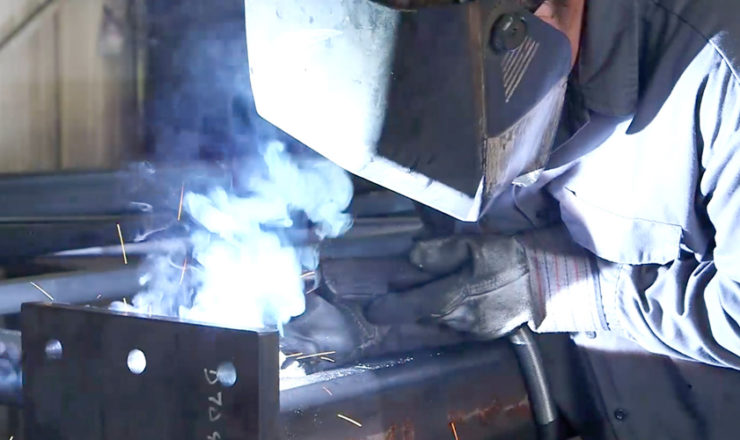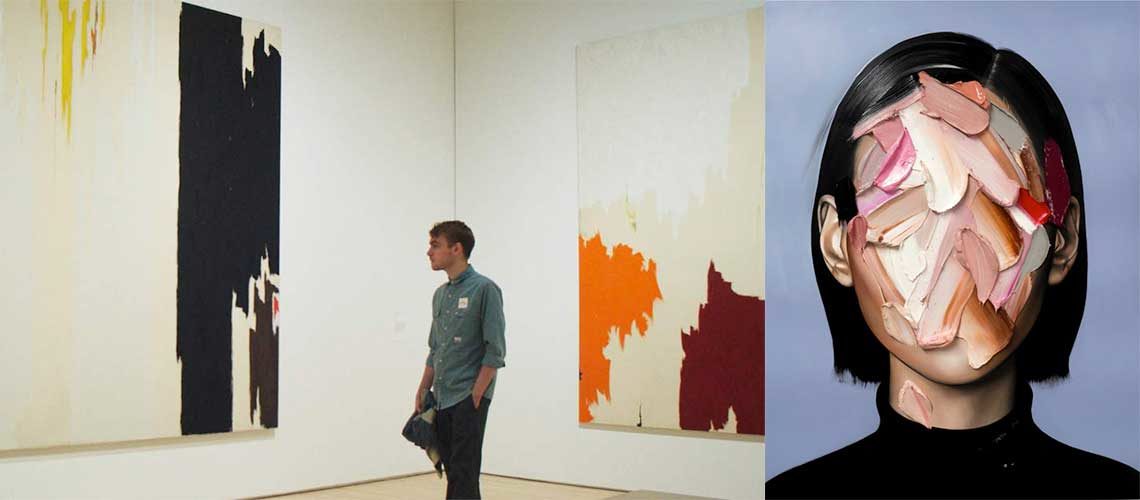
What is Modern Art
It was the practice before the 19th century to have artists commissioned by institutions like the church or by wealthy patrons to make artwork that complied to a specific set of standards.
Art was made back then with the intention of instructing the viewer through religious and mythological depictions, painting out models of imitation or philosophical concepts and beliefs to adhere by.
By the dawn of the 19th century, artists started shifting towards making art grounded on their personal ideologies, experiences and other topics of their own choosing.
With the historical advancements being made, artists began challenging the long rooted idea that art must realistically represent the world.
The Industrial Revolution brought on the birth of modernism and modern art. (The Museum of Modern Art, n.d.)
Modern Art: What is It?
Modern art is a whole different art in its own right from contemporary art.
Modern art refers to artworks made in the late 19th century until the early to mid 20th century.
As with the progressing times, modern art sought to re-imagine, reinterpret and even reject the traditional aesthetic ideals of styles and art movements that came before it. (Richman-Abdou, 2017)
Modern art was produced in conjunction with technological advances and the eclipsing of an industrial age that influenced populations into a new way of living and expressing themselves.
Artists began to depict their experiences in innovative pieces that reflected the times they were existing in.
Modern art actually refers to an immense number of artistic genres that span works made across the century.
Visually, modern art communicates an artists’ individual outlook on a subject as it manifests in the world without any regard to conventional movements and notions. (The Art Story, n.d.)
History: Major Artists and Art Movements
Beginning with the light, airy and richly colored Impressionism and ending with a bold, dynamic and absorbing Abstract Expressionism, the modern art genre is made up of several major art movements.
Below, is a concise overview on the 9 influential art movements (Visual Arts Cork, n.d.) of modern art.
Impressionism

The Pork Butcher by Camille Pissaro 1883
IMAGE SOURCE: The Tate Exhibit (Pissaro)
Impressionism is the renowned catalyst for modern art, doing away and challenging the unyielding rules and realistic portrayals of academic painting. Claude Monet, Edgar Degas, Camille Pissaro and Alfred Sisley among others founded Impressionism in 1874 (Samu, 2004).
Impressionism was essentially the art movement that aimed at capturing ‘impressions’ of everyday life and its movements as it happened in the moment through the eyes of the artist making the art.
At its core, Impressionism is anti-academic and really drives in that point by being independent from government sponsored annual exhibitions known as Salon, in favor of exhibiting the Impressionist’s art in venues outside of established exhibitions. (The Art Story, n.d.)
Signature brushstrokes of Impressionism are made out of highly vivid colors, laid on a canvas through looser, lighter and less rigidly structured techniques compared to other art styles. (Tate, n.d.)
Post Impressionism
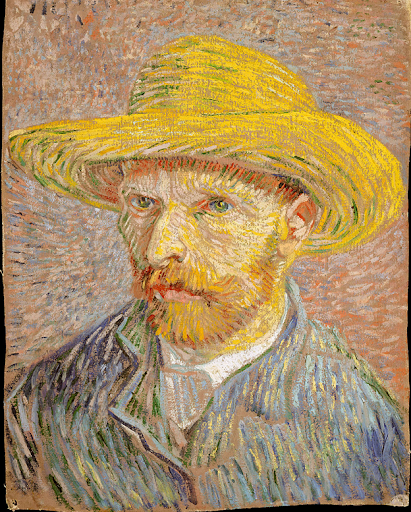
Self Portrait with a Straw Hat (obverse: The Potato Peeler) by Vincent van Gogh 1887
IMAGE SOURCE: The Met Museum (Gogh, Self-Portrait with a Straw Hat (obverse: The Potato Peeler), 1887)
The Impressionist movement had inspired a legion of artists with its showcasing of artistic liberation at its finest thus launching another movement known as Post Impressionism.
British painter and art critic Roger Fry first coined the term Post Impressionism in 1910.
Post impressionism sought to supply what artists felt Impressionism lacked by heavily protesting against the idea of employing true to life depictions of color and light through a range of individual styles that brought in emotional, symbolic, operational and spiritual elements whereby the limitations of dye and representation of Impressionism would be done away with. (Art Factory, n.d.)
The artists Paul Cezanne, Paul Gaugin, Georges Seurat and Vincent van Gogh developed the four distinct directions of Post Impressionism, establishing it also as an extension of Impressionism. (Tate, n.d.)
Fauvism
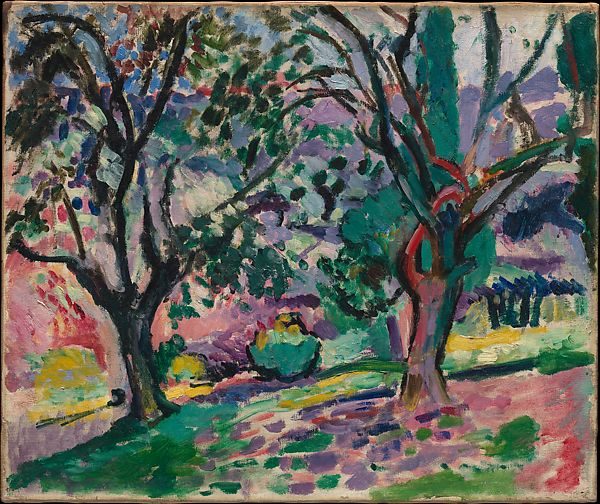
Olive Trees at Collioure by Henri Matisse 1906
IMAGE SOURCE: The Met Museum (Matisse)
Fauvists are characteristically like post impressionists as they too produced art without the use of realistic hues, tones and colors, having its chief eminence on personal and individual discernment.
This art movement first appeared in the early 20th century.
Fauvism is a term coined by the art critic, Louis Vauxcelles when he saw the art of Henri Matisse and Andre Derain made of vibrant and bold colors that were not natural to the subjects so over simplified, it began resembling an abstract painting producing this effect through spontaneous dabs of loose paint being applied most often straight out of the tube.
Fauvism comes from the French words les fauves which means ‘the wild beasts’. (Tate, n.d.) Fauvism had the radical goal of making color exist on the canvas as a completely independent element by using colors in a way that is not traditionally descriptive or representational.
The vivid colors used are what defines light and space on a canvas. (The Art Story, n.d.)
Expressionism
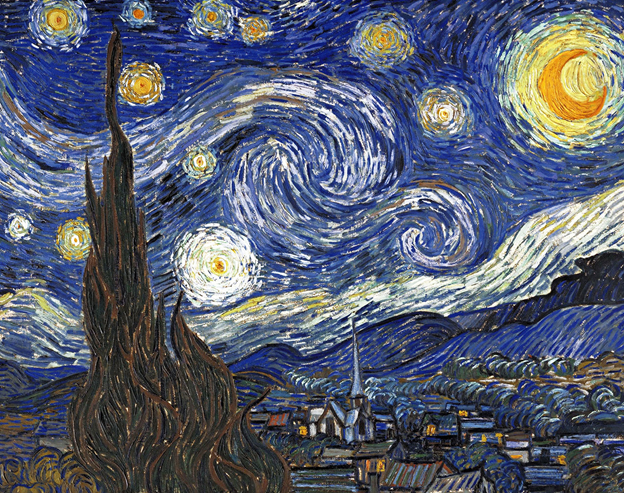
The Starry Night by Vincent van Gogh 1889
IMAGE SOURCE: History Archive (Gogh, The Starry Night)
Artists who sought to express their feelings, beliefs, outlooks on life, and emotional experiences dominantly on canvas found solace in the Expressionism art movement that disregard the conventional standards of portraying the physical reality as it is in favor of portraying it as it felt and not as it looked during a time that was plagued with fears, distresses, worries and apprehensions in the midst of the rampant devastation caused by World War I.
Expressionism emerged prominently throughout Germany and Austria between 1905 and 1920. (MoMA Learning, n.d.)
Expressionism is intended to evoke and relay an expressive and emotive response to a modern world that induces anxiety driven action. (The Art Story, n.d.)
Cubism

Weeping Woman (original title “Femme en pleurs”) by Pablo Picasso 1937
IMAGE SOURCE: The Tate Exhibit (Picasso)
To those who are not already informed of its nature, Cubism will look like a geometric abstract on canvas.
Cubism however is an art movement that aims to show all the different perspectives of one subject, taking note of all the different viewpoints that are shown to you when seen in different angles and combining that all into one artwork.
Cubism is characterized by its fragmented art style that is abstract and visually translates objects, subjects or figures into apparent geometrical planes.
Cubism is an art movement that was founded by the artists Pablo Picasso and Georges Braque around 1907 to 1908. (Tate, n.d.)
Described by Jacques Lipchitz, a renowned refugee artist, ““Cubism is like standing at a certain point on a mountain and looking around.
If you go higher, things will look different; if you go lower, again, they will look different. It is a point of view.” (Lipchitz)
Futurism

Armored Train in Action by Gino Severini 1915
IMAGE SOURCE: The New Yorker. Art Courtesy by The Museum of Modern art also known as MoMA (Severini)
With the changing times paired with its continuous development and ongoing evolutions, the dynamics of the modern mechanical world with its undeniable velocity had to be captured.
Futurism was the art world’s response to the present times and sought to portray it through abstract art and literature. Futurism was initiated by the Italian poet Filippo Tommaso Marinette in 1909.
Futurism represents a heavy condemnation for a culture that was full of oppression and tyranny in the past.
Futurism would instead promote and celebrate the modern industrial and technological world through works of art that were created with elements that are attributed to what is modern. (Tate, n.d.)
Art made in the style of Futurism was characterized by its main focus to movement, motion or the act of being dynamic created through new and innovative techniques that were being established as of that time including blurring, repetition and the use of lines of force. (The Art Story, n.d.)
Dada / Dadaism
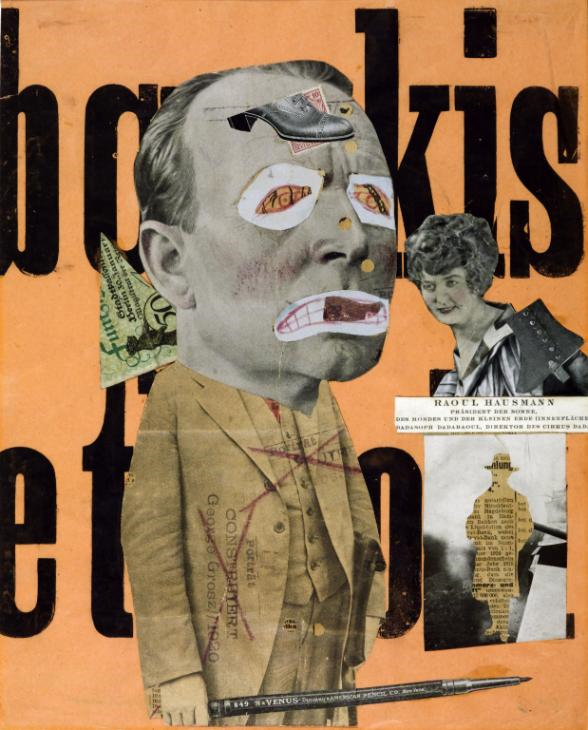
The Art Critic by Raoul Hausmann 1919 – 1920
IMAGE SOURCE: The Tate Exhibit (Hausmann)
Dada is also known as Dadaism and was established to primarily express the questioning of the destructive and exploitive fundamentals of war.
It also expressed its opposition to established conventions of logic and order that made up the social structures that were seen as degrading in addition to being corrupting.
Dada emerged in Zurich during the First World War from 1914 to 1918 in an attempt to artistically protest against the repeated suppressive and authoritarian societal practices and norms. (Tate, n.d.)
Dada artists embodied the need to break free from oppression through the pieces that were created; they shoved aesthetics to second place, prioritizing instead the principles, opinions or viewpoints often having social and political agendas being visually communicated to its audiences.
The poet and writer who initiated the Dada / Dadaism movement named Hugo Ball wrote that “For us, art is not an end in itself, but it is an opportunity for the true perception and criticism of the times we live in.” (MoMA Learning, n.d.)
Surrealism

The Persistence of Memory by Salvador Dali 1931
IMAGE SOURCE: Britannica (Dali, 1931)
Surrealism at its core is an art movement that ignores rationality and the ordinances of modern society that were oftentimes considered as repressive through creating art that disregarded what surrealism stood against in favor of tapping into what was called the ‘superior reality’ of the subconscious mind.
Surrealism was initiated in 1924 through the Second World War by the poet André Breton. (MoMA Learning, n.d.)
Surrealism pioneered the art of showing the worth of the unconscious and dreams all the while representing its beauty inclusive of the subjects that are typically unforeseen, uncanny, or eerie.
One of the strengths of the Surrealism art movement is that it would champion the irrational, the poetic and the revolutionary through showcasing hidden or often covert thoughts, languages and human experiences, creating a sense of liberty while at it.
Surrealism would also portray the intangible through the boundaries of rationalism by displaying psychological tensions that were kept concealed or trapped in a dream world like state. (Tate, n.d.)
Abstract Expressionism
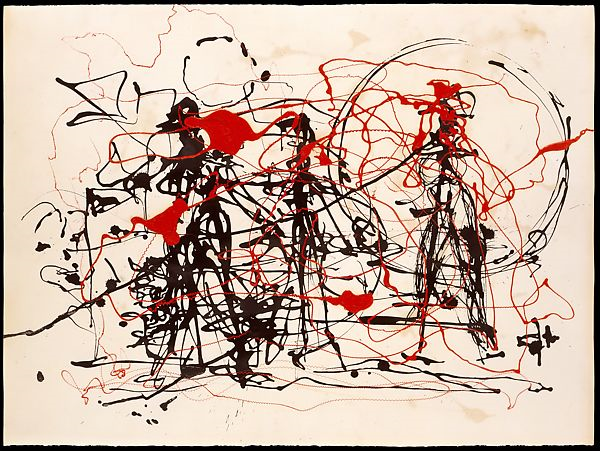
“Untitled” by Jackson Pollock ca. 1948 – 1949
IMAGE SOURCE: The Heilbrunn Timeline of Art History (Pollock, n.d.)
The New York School was a 1940s art movement that is more commonly referred to these days as Abstract Expressionism.
It is characterized by its primary intention of reflecting the psyches of individuals. (Paul, 2004)
The reflections of these psyches were done through a technique called ‘action painting’ whereby unplanned strokes of the brush would sweep across or sometimes even just drip paint across large canvases in patterns that were considered spontaneous, unprompted or even sometimes impulsive.
Abstract Expressionism also made use of other types of media, not fully confining itself with painting on large canvases only, and would branch into sculpturing and other forms of nontraditional painting materials; these mediums would be paired with different and new techniques of painting on canvases that were intentionally not primed, not stretched or both.
Abstract expressionism is known as a distinctly American art movement. (MoMA Learning, n.d.).
Pop Art

Still Life #30 by Tom Wesselmann. April 1963
IMAGE ART: The Museum of Modern Art (Wesselmann, 1963)
Art that drew strong influence from commercial, mass and popular culture in contrast to the conventional standards that had underlying themes of the Greeks, Romans, philosophy and other conceptual inspirations of traditional fine art came to be known as Pop Art which dominated across Britain and America.
Pop art would take its subjects from advertising, comic books and even mundane factory produced products like a can of Campbell’s soup.
Pop Art emerged in the 1950s, becoming even more iconic and widespread by the 1960s. (Tate, n.d.)
Pop art visually emphasized what was kitschy and common, taking these rather normal attributes of everyday life and transforming them into facsimiles displayed in large scales.
Among other mediums that were used, Pop Art would notably be seen on silkscreens that were mechanically produced and soft sculptures designed to take day to day items and metamorphose it into a magnified scale. (The Art Story, 2016)
Themes and Concepts of Modern Art
Modern art is a creative and inspired response that visually communicates relevant themes and concepts of its time.
Modern art in itself was a global movement recognized also as modernism.
Numerous styles make up what we call modern art though its underlying principles are that it rejected conservative views such as the realistic portrayal of subjects; it advanced art innovation and experimented with forms like the shapes, lines and colors that compose the piece; it had leaned into a predisposition of abstraction; and it would emphasize materials, techniques and processes employed to make the art. (The Tate Exhibit, n.d.)
Modernism was driven by social and political agendas that were often utopian. It was connected to the ideals of what human life and society should be, integrating beliefs in progress as it went.
To better understand modern art, here is a brief discussion and overview of the attributes that made modern art the movement that it is from its modern artists, modern art movements, and the progression of modern art from the Avant Garde.
Modern Artists
Taking inspiration and often times even influence from preceding artistic movements was a pillar that formed modern art however, the primary goal and what modern artists were ultimately working towards is to advance, develop and further their craft to a stance of pure originality.
Modern artists portrayed matters that were widely considered as controversial, lewd or even categorically ugly.
These artists worked to establish themselves as independent and free thinkers, breaking away from the visual art standards endorsed by traditional government run academies and patrons of the upper class.
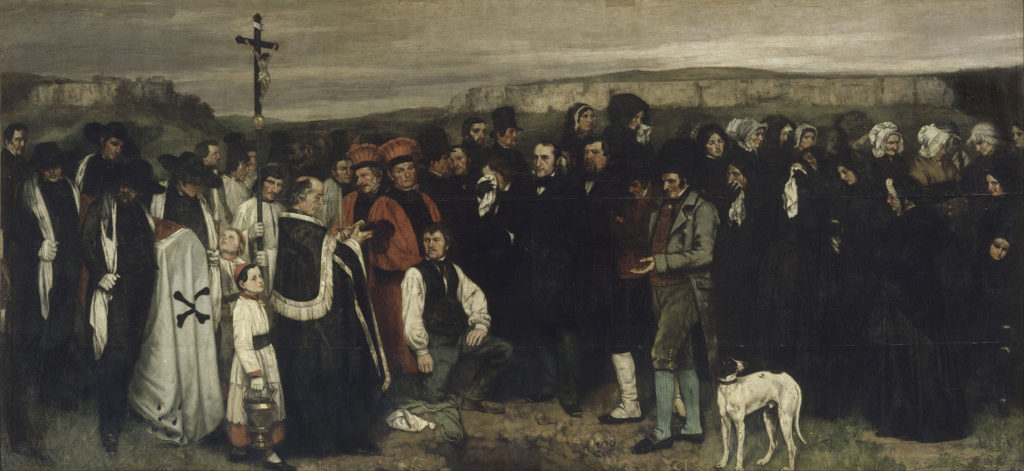
Burial at Ornans by Gustave Courbet 1849 – 1850
IMAGE SOURCE: Wikimedia Commons (Courbet, 1849 – 1850)
The first notable modern artist to achieve standing on his own regard was Gustave Courbet.
Gustave Courbet ventured to develop his own unique style that was done through his painting Burial at Ornans made from 1849 to 1850.
The Burial at Ornans is considered as scandalizing French art as it portrayed the funeral of a common man, littered with what was seen as dirty farm workers around an open grave, from a peasant village.
The Academy believed that there was no place for such work since it propagated the idea that the only subject matters fitting for large paintings are classical myths or magnificent historical scenes.
At the beginning, Courbet was shunned though it was later proved that his art was highly significant and would influence upcoming generations of modern artists.
The usual cycle of modern artists being ostracized and then later considered influential has been recurring for hundreds of artists under the modern era. (The Art Story, n.d.)
Modern Art Movements
In spite of the fact that classifications can be seen as remissive, different artistic styles, visuals and tendencies can be grouped into collectives called art movements.
This approach of classifying individuals and their outputs into a single unit driven by a particular goal such as the case with Futurism, Surrealism, Impressionism and its extensions, has sufficed to recognize centralized movements.
However, the practice of identifying and classifying movements is not always completely accurate or appropriate as the many distinguished movements, schools and artists are so widely diverse with different modes of artistic expressions that overlap.
Despite the complications, imperfections and inaccuracies of designating movements, the monumental account of modern art can be taken and recognized into smaller, more organized segments which allows for an improved inspection of specific artists and their works of art. (The Art Story, n.d.)
The Avant Garde and the Progression of Modern Art
Avant-garde is a French term for the body of soldiers positioned to go ahead of the rest of the army in preparation for the main body of the army also known as vanguard or advanced guard in English. The role Avant Garde played in the progression of modern art is reflective of its military derived namesake. As a whole, the most widely known and successful modern artists actually had a prominent background in Avant Garde.
The Differences: Modern, Contemporary and Post Modern Art
Contemporary art is loosely defined as any form of art made from any medium that was produced in the present times.
In the world of art however, contemporary art is more specifically an art movement that emerged during and after the 1960s pop art era.
Modern art gave way to contemporary art in the 1960s where movements such as Earth art, performance art, neo expressionism and digital art boomed.
Contemporary art is not a clear cut period but rather, it marks the end of the modern art era. Meanwhile, postmodernism began in the late 1960s as an often opposing reaction to modernism projects and creations.
Ironically, due to how widespread it has become, modernism became the new standard that institutions began to promote and incorporate into their traditions that were now evolving to adapt, which is exactly what modernism had sought to protest against.
Postmodernism deconstructed modernisms’ imposing narrative in favor of discovering and exploring the ideologies and codes of culture, politics and social constructs within their immediate context. (The Art Story, n.d.)

